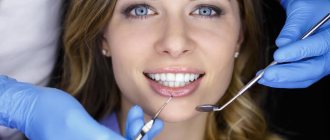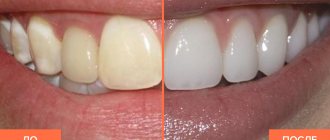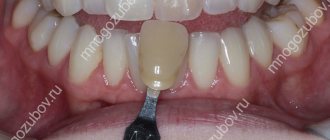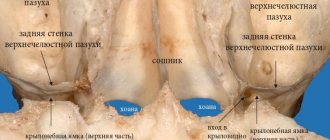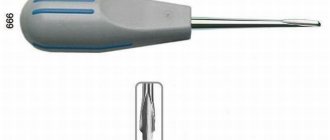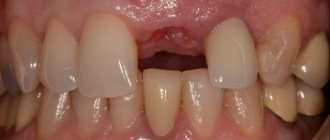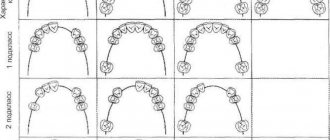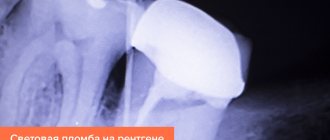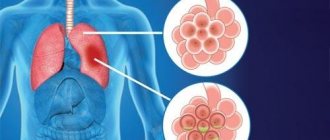A beautiful, attractive smile is very important for communication in the modern world. When meeting, it is customary to smile, at least out of politeness, and in moments of joy we involuntarily laugh with our mouths open.
Unfortunately, various pathologies can lead to a noticeable change in the color of one of the central teeth. This significantly reduces the aesthetic perception of the entire smile as a whole. Even one tooth of a different shade involuntarily attracts attention.
Tooth discoloration is a pathological change in color in the area of enamel, dentin, or both. There are two types – external and internal.
External discoloration
The reason is a pigmented plaque that forms on the roughness of the enamel, in microscopic cracks or anatomical cavities. Discoloration of teeth in this case is a consequence of consuming coloring products (tea, coffee, red wine, soda, etc.), smoking, and a reduced level of hygiene. Professional teeth cleaning at the dentist with mandatory enamel polishing, teaching the patient the rules of personal hygiene, and limiting the intake of coloring products will help get rid of it. In some cases, it is possible to use abrasive preparations.
External discolorations
The amount and rate of accumulation of external agents varies individually and widely, and several factors can influence the rate of formation of tartar and pigments. These include: defects in the enamel surface, the composition and fluidity of saliva, and poor oral hygiene.
Speed can also be associated with a combination of external factors (tea, coffee, tobacco, taking medications) and internal experiences. Based on the physicochemical interaction of agents with the enamel surface, Natoo proposed a classification of external discolorants.
Brown plaque
A thin film, not contaminated with bacteria, is more often found on the vestibular surface of molars in the upper part and the lingual surface of the incisors in the lower part.
Affects patients with poor oral hygiene and those who use toothpaste with inadequate cleaning agents and
Internal discoloration of teeth
In this case, the color change occurs at a deeper level in the enamel or dentin of the tooth. Whitish erosive spots form on the teeth, which can turn yellow and black over time.
The cause of dental discoloration in this case is the penetration of certain substances into the body. In particular, the increased content of fluoride in drinking water (fluorosis) and the use of tetracycline antibiotics affect it. Violation of mineral and protein metabolism causes enamel hypoplasia - its absence or insufficient development. Age-related changes in the body also lead to thinning of the enamel and, in combination with external factors, yellowing and darkening can develop.
We list the local causes of discoloration:
- “dead tooth” or depulpation (nerve removal). Over time, the tooth becomes darker, grayer, yellower than vital,
- previous root canal treatment using the resorcinol-formalin method. Over time, the crown turns pinkish-brown,
- trauma during the growth of the dental system with the penetration of blood into the mineralization zone,
- Improperly performed orthodontic treatment can damage the ligamentous apparatus (periodontium) of the tooth, resulting in trophic disturbances and loss of vitality.
Medical Internet conferences
Relevance. The term “dental discoloration” means a change in the color of the crowns of natural teeth. Changes in tooth color are a fairly common cause of impaired smile aesthetics; the prevalence of this condition in the structure of dental pathology is about 15% [1]. A beautiful smile reflects a person’s social success, his health and simply predisposes people to him, but unfortunately, the rhythm of life of a modern person does not always allow him to maintain the natural appearance of his teeth and their health. A large number of bad habits, in particular smoking, poor oral hygiene, eating a large number of foods with a high content of coloring pigments - all this negatively affects the color of teeth. People have to pay a lot of money to try to change the current situation with discloritis of their teeth by visiting the dentist’s office, where they undergo procedures in the form of professional whitening, professional oral hygiene, which are not always pleasant and take up a large amount of their personal time. Therefore, it is an important value to realize in time what influences the color of teeth to a greater extent in everyday life and try to avoid these negative factors
Purpose: structuring the etiological factors of dental discoloration and identifying the relationship between the causes of discoloration and shades of teeth.
Tasks:
1. Display the structure of etiological factors for changing the color of teeth with a description of the mechanism of action of each factor.
2. Establish the relationship between the most common etiological factors of discoloration and tooth tones.
Materials and methods. An analysis of scientific articles and a review of modern educational literature on the topic “changes in tooth color” were carried out. A survey was conducted of 30 students of the Faculty of Dentistry of the Federal State Budgetary Educational Institution of Higher Education "Saratov State Medical University" named after. IN AND. Razumovsky" of the Ministry of Health of the Russian Federation aged from 20 to 25 years and 30 schoolchildren of the MBOU "Secondary school No. 33 named after P.A. Stolypin" in the city of Engels, aged from 13 to 17 years (the average age of those examined in both groups was 17.8 years). Of these, the number of males is 27 (45%), females 33 (55%). In these groups, a survey was conducted, where respondents were asked to select the most common reasons associated with changes in the color of their teeth. Then the color of the teeth was assessed using the Vita color scale. Further statistical processing was carried out manually.
Results and discussion. In the structure of etiological factors of dental discoloration, it is traditional to distinguish two main directions - temporary and permanent color changes.
Temporary changes in tooth color. This group includes those discolorations that, as the name suggests, can either intensify or disappear over time, depending on the strength of the etiological factor [2]. This type of discoloration includes the very common ones today - changes in the color of teeth due to the influence of food dyes contained in large quantities in foods and drinks, which are available in a wide range in any grocery store and chain catering establishment. When it comes to drinks, coffee comes to the fore, a drink made from roasted plant seeds. By consuming it hot, a person creates conditions for staining his teeth, because in the interval between the expansion and contraction of the surface layers of enamel, which occurs as a result of temperature fluctuations, the penetration of coloring substances into the tooth occurs. As a result, people who abuse coffee develop a light brown or yellow tint to their enamel over time. Tea containing the coloring pigment tannin has a similar mechanism of action. It should be noted that discolorations can be of two types: internal and external. If the coloring substances do not penetrate directly into the tooth structure, but only settle on its surface, then this color change will be external. If the opposite happens, and the pigments penetrate the enamel, dentin and cementum of the tooth, then such staining will be called internal. It follows that even when drinking non-hot coffee and tea, coloring pigments can settle on the surface of the enamel and cause staining of the tooth if a person does not rinse the mouth with water after drinking the drink [3].
Colored highly carbonated drinks, which have become companions of modern fast food, and which are often consumed by people at a young age who constitute a risk group, can also cause tooth discoloration. The presence of an acidity regulator in the form of citric acid (food additive E330) in these drinks negatively affects the health and structure of the teeth, and the carbohydrates and sugars contained in large quantities (about 20% in total) are a substrate for reproduction and contamination of the oral cavity cariogenic microflora, which will subsequently lead to demeniralization processes and damage to the integrity of the tooth. In the future, as described earlier, the pigments will penetrate into the internal structures of the tooth and cause staining. In ongoing scientific studies, situations involving the impact of aggressive highly carbonated drinks on extracted intact teeth were simulated, where they were placed, after cleaning and disinfection, in a container with various liquids for a period of one day. As a result of the experiment, it was found that the most aggressive liquid was the Coca-Cola drink, which caused staining of the enamel to a depth of 0.81 mm [4].
When talking about products that have the strongest coloring properties, it is worth focusing on sweets and berries. For example, chocolate, unlike previous products, does not cause temperature fluctuations in the oral cavity and does not contain aggressive acids, but having greater viscosity and adhesion, it contacts the tooth surface for a longer period of time, facilitating the penetration of pigments into the surface layers of enamel , and the formation of dental plaque. And we should not forget that even such healthy foods as berries can harm the health and beauty of teeth if their consumption is not controlled. Containing both a large amount of pigment substances and enamel-damaging acids, they also contribute to permanent discoloration of teeth. Raspberries, grapes, blueberries and currants are considered the most “unfavorable” for teeth.
Also included in this group are unstable dental discolorations, which occur as a result of a person’s bad habits. The most common habit that leads to yellowing of teeth is smoking. The determining factor in mechanical damage to teeth when smoking is the huge temperature changes that occur in the oral cavity while smoking a cigarette. According to research, temperature fluctuations reach 10-15 times the norm [5]. As a result, the slightest microcracks appear on the surface of the enamel, through which pigment particles will penetrate deep into the tooth and cause staining.
The next etiological factor from the group of temporary discolorations is unsatisfactory oral hygiene. Due to non-compliance with the rules of brushing teeth, and in particular: brushing less than twice a day, the movements of the toothbrush do not correspond to the methods of brushing teeth, insufficient time devoted to brushing, untimely change of the toothbrush, weak force applied to the toothbrush – over time, all these factors will contribute to the accumulation of plaque of varying degrees of pigmentation on the teeth [6]. According to its species structure, plaque comes in two main types – green and brown. The first type is most often found in young people. Located in a thin layer on the surface of the frontal group of teeth, it contains chromogenic microflora (fungus Lichen dentalis), which determines its color. The brown type can most often be found in smokers, people who abuse tea and coffee drinks, as well as people working in enterprises associated with the production of brass and bronze products, where there is a large amount of suspensions of these materials in the air, which are deposited on the surface over time teeth.
The next direction in the structure of etiological factors of tooth dislorites is permanent staining. In turn, it is divided into permanent congenital color changes and permanent acquired ones.
Permanent congenital color change. The first cause considered in this subgroup will be “tetracycline teeth.” This disease is rarely encountered in the clinical practice of dentists, due to the increased role of preventive work in antenatal clinics, but is still often mentioned in textbooks and literature, so it makes sense to consider it in more detail. Changes in tooth coloring are associated with the mother taking antibiotics from the tetracycline group during pregnancy (starting from the fifth month of intrauterine development), as well as treatment of a child under 7 years of age with the same drugs. The follicular development of teeth that occurs at this time is disrupted; tetracycline binds to hydroxyapatite of hard dental tissues using chelate compounds to form a tetracycline orthophosphate complex, which in the future will be responsible for the lemon tint of teeth. After some time, as a result of food pigments and the photochemical reaction that occurs due to sunlight, the color of the teeth will turn dirty brown. The possibility of the appearance of “tetracycline teeth” remains in the adult population taking these medications, in which the penetration of the antibiotic into the internal structures of the tooth will be due to the diffusion of the drug from saliva [7].
A pathology such as hemolytic diathesis, which develops as a result of incompatibility between the blood of mother and fetus, can also lead to the development of congenital discoloration. As a result of the Rh conflict, hemolysis of the erythrocytes of the newborn and fetus occurs with the formation of a large amount of unconjugated bilirubin. Penetrating and accumulating in the structure of temporary teeth (mainly in dentin), over time, bilirubin breaks down, which leads to a change in the color of temporary teeth, ranging from yellow to brown or greenish-blue shades.
With congenital malformations of the biliary system, when, due to various etiological reasons, the outflow of bile is disrupted and its stagnation in the bile ducts, a disruption of the connection between the blood and bile capillaries occurs. As a result, this leads to an increase in the level of direct and indirect bilirubin and the further mechanism of color change is similar to that described in hemolytic diathesis.
In Gunther's disease (synonyms: congenital porphyria, erythropoietic uroporphyria), transmitted in an autosomal recessive manner, uroporphinogen-3-cosynthase deficiency occurs, which leads to excessive formation of intermediate products of heme synthesis, namely uropophrinogen and coproporphinogen. Subsequently, they are deposited in the hard tissues of the teeth, giving them a purple-brown color, and fluoresce in ultraviolet radiation with either an orange or a red tint [8].
In fluorosis, excess fluorine enters the enameloblasts during enameloblasts and forms a strong hydroxyfluorapatite structure. Subsequently, the excess amount of fluoride is fixed on the enamel surface in the form of a calcium fluoride compound, covering the enamel hydroxyapatite. Having different optical characteristics, calcium fluoride changes the color of the enamel surface to a more matte one. The further mechanism of color change during fluorosis is not fully understood, but there are suggestions that areas that become darker over time are softer, where dyes penetrate to a greater extent in the future [9].
The change in color during systemic hypoplasia to whiter is explained by impaired development of tooth tissue and demineralization processes. The cause of local hypoplasia can be injury to a baby tooth during the time period when the formation of a permanent tooth germ occurs. In this case, the breakdown products of blood cells enter the tissues of the permanent tooth germ, which are included in the enamel matrix of the permanent tooth during its mineralization, changing its color to gray.
Permanent acquired color changes. Age-related change in the color of teeth is a polyethylological phenomenon and only with the combination of a large number of factors, over time, in older people, a change in the coloring of the crowns of teeth occurs. Firstly, over time, the quantitative ratio of tooth structures changes - the amount of more transparent enamel decreases and the percentage of replacement dentin increases, which in turn is not only darker in shade, but is also more easily susceptible to pigmentation, since it has greater permeability. In addition, with age, the pulp chamber decreases, which also leads to a decrease in the transparency of the tooth. Secondly, an important role is played by the combination of exogenous influences that were already described earlier in the article - smoking, the presence of food pigmentation, the appearance of dental plaque, microcracks and defects in the surfaces of teeth. All this together forms the appearance of an “old” tooth over time.
The color of teeth can also change as a result of the carious process. Already at the initial stages of the pathological process, as a result of subsurface demineralization, a change in the color of the teeth occurs - they become chalky. In the future, over time and the progression of the process, the superficial and deep layers of enamel and dentin will be saturated with pigments diffusing from the oral fluid. At later stages of the process, the staining of necrotic dentin black will occur due to the microflora of the oral cavity, and in particular, changes will be caused by Porphyromonas endodontalis and bacteria of the genus Prevotella.
The crown may turn pink as a result of an injury. This occurs as a result of a complete rupture of the neurovascular bundle in the area of the apical foramen. Over time, due to the decomposition of hemoglobin and the appearance of hemosiderin and other pigments of decomposed blood in the pulp chamber, the color of the tooth will change to darker shades - burgundy and even blue-black. When the traumatic factor is insignificant, and when the structure of the neurovascular bundle is not disturbed, the color of the crown may change to more yellow shades - this is a consequence of the deposition of tertiary dentin and a decrease in the size of the pulp chamber [10].
Discolors during tooth depulpation have a similar mechanism of action for color changes. The areas of pulp under the hanging walls of dentin that have been preserved after poor-quality preparation will also decompose into iron-containing complexes with the subsequent coloring of the teeth in a dark sulfur color.
Violation of the technique of filling root canals, when, due to incorrect actions of the doctor, the material ends up in the coronal part of the tooth, in turn, can also lead to dental discloritis. This is true for pastes containing eugenol, which lead to a yellow-brown tint of teeth, for materials containing formaldehyde (resodent, resorcinol-formalin paste, forfenan), which change the color of teeth to pink. Also, if a mistake is made during endodontic procedures, when a section of a broken metal instrument is left in the root canal, the teeth will change color to a dark gray color due to diffusing metal ions.
When conducting a survey of students and schoolchildren, where they were asked to select the causes of discoloration they had, reflected in the article, the most common factors were identified - poor oral hygiene, consumption of drinks containing a large amount of coloring pigments, consumption of coloring products and the presence of signs of carious lesions in the oral cavity. Discolorations due to poor quality treatment and nicotine pigmentation were less common. The structure of identified predisposing factors for dental discoloration among those examined is presented in the table.
Structure of discoloration factors (n=60)
| Factors | Students (20-25 years old) (n=30) | Schoolchildren (13-17 years old) (n=30) | ||
| Abs. | % of all students | Abs | % of all schoolchildren | |
| Consumption of foods with high coloring power | 13 | 43 | 28 | 93 |
| Drinking drinks with high coloring power | 13 | 43 | 18 | 60 |
| Poor oral hygiene | 11 | 36 | 17 | 56 |
| Dental caries | 20 | 66 | 10 | 33 |
| Discoloration due to poor treatment | 3 | 10 | 3 | 10 |
| Nicotine pigmentation | 3 | 10 | 0 | 0 |
Based on the data in the table, we can conclude that in the group of schoolchildren examined, the most common factors of dental discoloration are food pigmentation - consumption of both foods and drinks containing a large amount of coloring pigments, as well as poor oral hygiene. For a group of students, dental caries comes out to be the first predisposing factor. It should also be noted that in the group of students such a bad habit as smoking appears that contributes to discoloration of teeth. This leads to recommendations aimed at eliminating discolouration. Persons who abuse the consumption of coloring foods or drinks must observe hygienic measures: after eating such food, you must thoroughly rinse your mouth with water, or, if possible, brush your teeth. Persons with unsatisfactory oral hygiene need to master the standard method of brushing their teeth under the supervision of a dentist, brush their teeth for 3 minutes 2 times a day - in the morning before breakfast and in the evening before bed, use additional hygiene products (floss, toothpicks, interdental brushes) for cleaning contact surfaces, change your toothbrush to a new one every three months. Persons with carious lesions are recommended to sanitation of the oral cavity, and the only measure to prevent nicotine pigmentation is to give up this bad habit.
Next, the tone of the teeth was assessed using a color scale. The group of examined patients had tooth colors from A1 to B4, the most common were the following: A2 (18% of those examined) and D4 (13% of those examined), C2 (13% of those examined). During further statistical processing, the examined patients were divided into groups corresponding to their teeth tone, and the influence of each etiological factor presented in the table on each group was assessed. During this process, the clearest relationship was established between poor oral hygiene and discoloration of their teeth. Students with teeth shade A1 had an insufficient level of hygiene in only 25% of cases, while in the following groups with darker shades this percentage increased (B2 - 50%, D2 - 66%, A2 - 50%, C1 - 50%, C2 – 50%, A3 – 66%, D3 – 100%, B3 – 100%). The same trend was observed in the group of schoolchildren (D2 - 0%, A2 - 0%, C1 - 33%, C2 - 62.5%, D4 - 50%, A3 - 100%, D3 - 100%, B3%, A3 .5 – 100%, B4 – 100%). In the case of other etiological factors, such a clear relationship was not established. For example, the consumption of coloring drinks in the group with a light shade of B2 was 100% of those surveyed, while in the group with a tooth shade of B3, which is much darker, it was only 50%. The presence of a small number of smokers among those examined did not allow us to evaluate this parameter, but it should be noted that the lightest shade of a smoker’s teeth was C1, which is a very dark shade, allowing us to say that smoking, as well as poor hygiene, have a direct relationship with color change teeth.
Conclusions:
1. In the group of examined schoolchildren, the most common factors of dental discoloration are food pigmentation - consumption of both foods (93%) and drinks (60%) containing a large amount of coloring pigments, as well as poor oral hygiene (56%). For a group of students, dental caries comes out on top as a predisposing factor (66%). It should also be noted that in the group of students such a bad habit as smoking appears (10%).
2. As a result of the study, after statistical processing, the clearest relationship was revealed between poor oral hygiene and developing dental discoloration. Students with teeth shade A1 had an insufficient level of hygiene in only 25% of cases, while in the following groups with darker shades this percentage increased (B2 - 50%, D2 - 66%, A2 - 50%, C1 - 50%, C2 – 50%, A3 – 66%, D3 – 100%, B3 – 100%). The same trend was observed in the group of schoolchildren (D2 - 0%, A2 - 0%, C1 - 33%, C2 - 62.5%, D4 - 50%, A3 - 100%, D3 - 100%, B3%, A3 .5 – 100%, B4 – 100%). At the same time, the establishment of the same clear relationship among other etiological factors did not occur, which indicates their lesser role in the occurrence of changes in tooth color.
Treatment of dental discoloration
Aesthetic dentistry has various methods of treating discoloration:
intracanal bleaching – will help restore the light shade of a pulpless tooth,- in-office teeth whitening – brightens and evens out the color of enamel by several orders of magnitude,
- home teeth whitening with trays - can be done at home, but under medical supervision,
- installing veneers on teeth in the smile area will help eliminate discoloration due to internal causes of the body,
- installing a crown made of pressed ceramics completely imitates a living tooth in a row and will hide any defect.
Treatment of dental fluorosis
Patients with enamel damage suffer from aesthetic discomfort and the inability to chew food normally. In order to restore teeth and their color, the center’s staff sometimes have to make non-standard decisions. Their implementation is possible thanks to the availability of modern equipment in the clinic and the professionalism of doctors who strive to make the treatment of dental enamel hypoplasia as effective as possible.
Patients of the center receive a full range of services, including diagnosis of the causes of the disease and preventive measures. You can go to the clinic with any degree of illness, confident that the dentists will take all measures to gently and quickly correct defects.
How to treat discoloration at home
You can try to remove pigmented yellow and brown plaque with tooth powder or baking soda. The main thing here is not to overdo it and not damage the enamel layer. Highly abrasive pastes must be used very carefully - paste with charcoal can erase the enamel or leave scratches on it. It is recommended to use such toothpastes no more than 2-3 times a week.
There are ways to combat discoloration online using lemon juice and hydrogen peroxide. Most likely, such methods will not harm the teeth, but the effect will be insignificant.
More effective methods are based on a high concentration of hydrogen peroxide or urea. These are various sticks, strips, mouth guards with gel of dubious production from the mass market. These medications often cause tooth pain and sensitivity. These methods are not suitable for treating internal discolorations; you should visit a dental clinic and consult a dentist.
Internal color changes. Systemic causes.
Genetic defects:
Alkaptonuria is a hereditary disease caused by loss of functions of homogentisic acid oxidase and characterized by a disorder of tyrosine metabolism and excretion of large amounts of homogentisic acid in the urine. Often, patients with alkaptonuria develop pigmentation of the sclera and auricles, which is associated with the deposition of deposits of homogentisic acid in them. The intensity of such deposits may vary. These changes usually do not bother patients, but are one of the signs of this disease that have important diagnostic significance.
In the oral cavity, a bluish discoloration of the crowns of the teeth is observed on 1/2 crowns. There is increased dentin density with a yellow-brown change in the cervical half of the teeth.
Congenital erythropoietic porphyria develops with the birth of a child or in the first year of his life. Sometimes the initial signs of the disease can appear at the age of 3-4 years and older. The disease occurs equally in men and women. Red urine is the initial sign of the disease. Characterized by overdeveloped hair (hypertrichosis, thick eyebrows, long eyelashes), pinkish-brown staining of teeth (erythrodontia) due to the deposition of porphyrins in the enamel and dentin. When examined under ultraviolet rays, teeth give off a bright purple-red glow.
Congenital is a group of hereditary enzymopathies characterized by impaired bilirubin metabolism and manifested by persistent or intermittent jaundice in the absence of pronounced changes in the structure and function of the liver, obvious signs of hemolysis and cholestasis. An increased content of bilirubin in the blood leads to its accumulation and subsequent decay in the tissues of temporary teeth (mainly dentin), causing them to stain in various colors - yellow, greenish-blue, brown. Bilirubin can also influence histogenesis, leading to the development of systemic hypoplasia of primary teeth. The absence of hypoplasia with discolored crowns of primary teeth, which developed as a result of hemolytic jaundice, can be explained by the low titer of antibodies in the mother’s body and the treatment of the newborn with fractional blood transfusions. Over time, the intensity of tooth coloring gradually decreases, which is especially noticeable on the front teeth.
Amelogenesis imperfecta is a severe hereditary disorder of enamel formation, in which the structure and mineralization of both temporary and permanent teeth are disrupted, which leads to discoloration and partial or complete loss of tooth enamel, while dentin remains unchanged.
Amelogenesis imperfecta is divided into 4 main types:
• hypoplastic, • hypomaturational, • hypocalcified, • hypomaturation-hypoplastic with taurodontism.
How is the treatment carried out?
- The patient comes for a consultation. The doctor conducts an examination and, if necessary, prescribes x-rays.
- A plan is drawn up to restore damaged teeth and calculate the cost of the procedures.
- Preparation of materials.
- Treatment.
- Carrying out a preventive examination.
- Recommendations for home care with the selection of hygiene products.
Restoring teeth without installing dentures and jaw surgeries is the reality of modern dentistry. The restoration is carried out in the shortest possible time and painlessly, and the effect satisfies all the patient’s needs and gives him a beautiful snow-white smile.
Repairing a chip using composite material restoration
A chipped tooth is a common problem that our patients come to us with. Specialists at the Moscow Region clinic eliminate this defect in several ways, one of which is using a composite material.
The procedure has the following positive aspects:
- The use of modern composite materials that imitate dentin and enamel in the desired color range and transparency.
- The procedure lasts no more than 1.5 hours and takes only one visit to the dentist.
- Affordable price.
- No dental laboratory services required.
- The tooth is processed minimally; only carious tissues and old fillings are removed; healthy tissues are not trimmed.
- If minor defects arise after restoration, they can be easily and quickly eliminated.
However, the method has several disadvantages. Firstly, composite restoration requires systematic monitoring by the dentist. Over time, the shape and color of the corrected surface changes and needs to be adjusted. Composite materials quickly wear out and lose their original shine and color; roughness appears on the surface, which is filled with plaque. Secondly, the composite has low strength; five years after use, cracks appear, which disrupts the adhesion of the material to the tooth. As a result, chips are formed and the risk of re-development of caries. And thirdly, the restored area may differ from the rest of the teeth due to the difficulty of choosing a composite that is visually similar to dental tissue.
